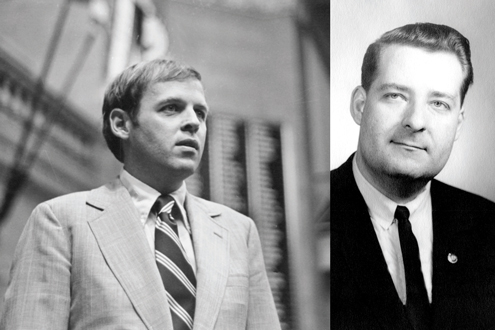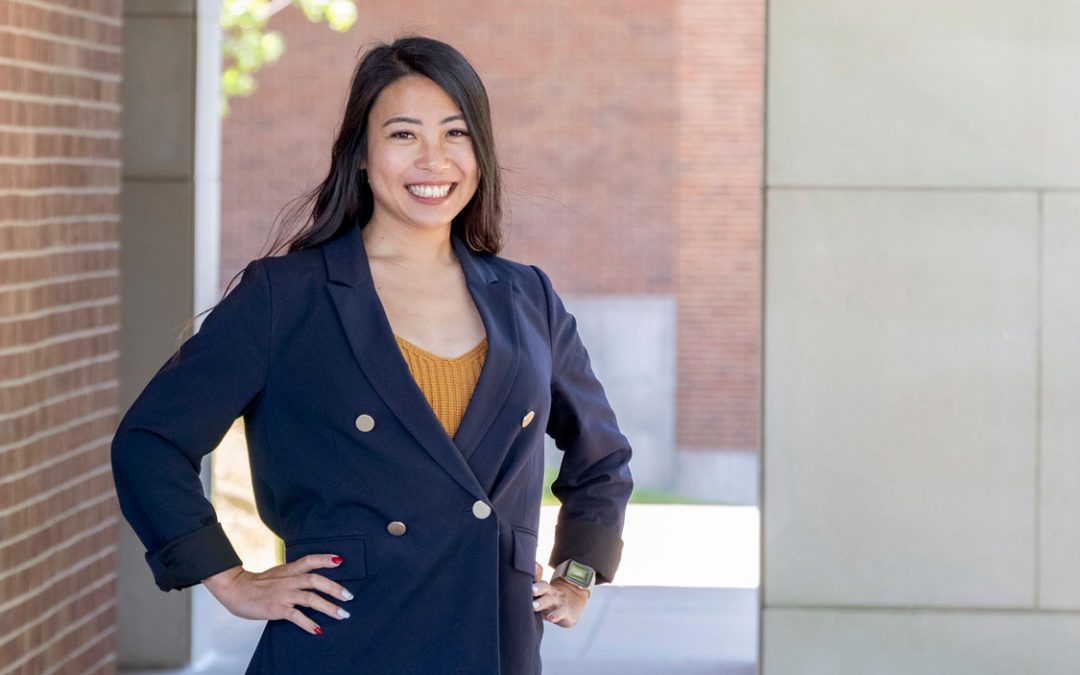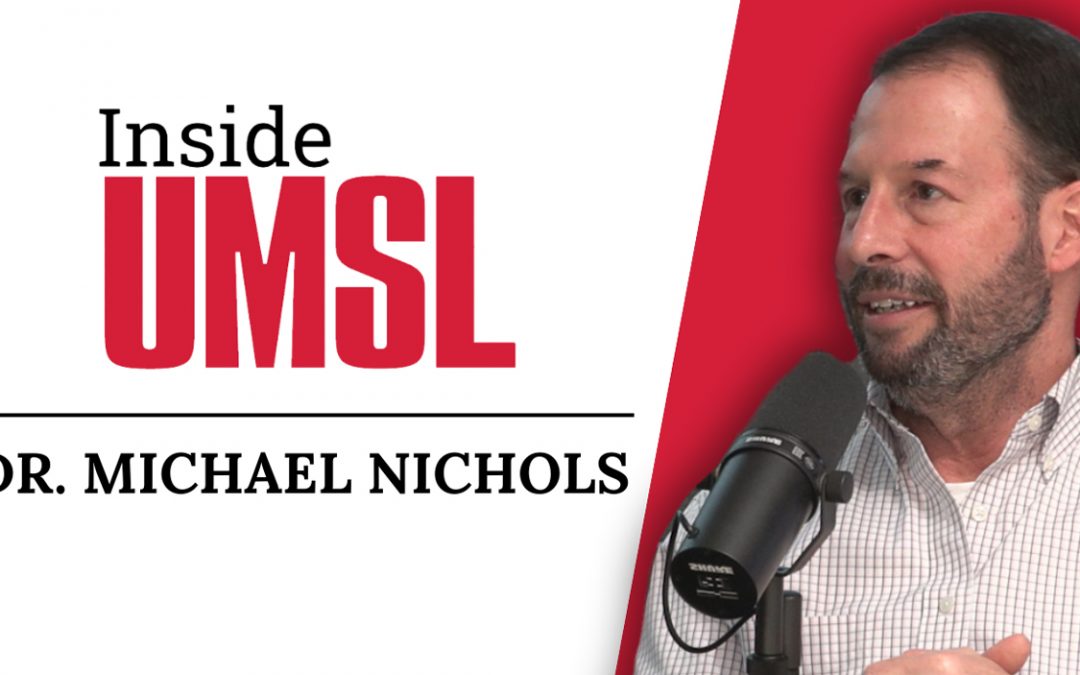
Missouri lawmakers Wayne Goode (left) and Ken Rothman worked on legislation that made it possible for the Normandy School District to transfer land to the University of Missouri. The deal made the creation of UMSL possible. (Goode photo courtesy of Blanche Touhill. Rothman photo courtesy of the Missouri State Archives.)
The year was 1963, and it was all falling into place – the people of Normandy, Mo., were working to convey a piece of property owned by the Normandy School District to the University of Missouri in order to bring public higher education to St. Louis.
Led in large part by Superintendent Ward E. Barnes, district residents passed a bond issue to purchase the former Bellerive Country Club in north St. Louis County. Barnes and the district envisioned luring a higher education institution to the site as a way to offer more educational opportunities to St. Louis-area residents and stabilize nearby neighborhoods.
Simultaneously, the University of Missouri – headed by President Elmer Ellis – explored the possibility of opening campuses in Kansas City and St. Louis. The university ultimately decided the Bellerive site was ideal for a St. Louis-area campus.
So a deal was struck. Normandy would transfer ownership of the 128-acre country club for a nominal fee. In return, the University of Missouri would establish a campus at the Bellerive site.
Just one problem: The property deal was illegal.
State law mandated that public schools solicit competitive bids when selling excess property, but that process didn’t appeal to either the district or the university. Competitive bidding would not guarantee the college or university that Normandy residents sought. University of Missouri officials had no interest in a bidding war with a potential developer, noting that its Columbia and Rolla campuses were built on donated land.
That’s when lawmakers Wayne Goode, of Normandy, and Robert Young, of St. Ann, stepped in. In January 1963, state Rep. Goode introduced the 78-word House Bill 153, and state Sen. Young introduced a companion bill in the Missouri Senate to make the proposed land transfer legal. Both supported bringing the University of Missouri to St. Louis and were sold on the merits of creating that campus in the Normandy area, as was Missouri Gov. John Dalton.
Barnes’ rationale for support was that St. Louis was the largest metropolitan region in the United States without access to public higher education, which did not bode well for local citizens or the overall regional economy. It turned out to be a winning argument.
“The key for passing this legislation through the General Assembly, particularly for a freshman representative, was cementing strong local support and then convincing our colleagues in rural Missouri,” Goode says. “We had a good case, and I was fortunate to attract some very persuasive co-sponsors in introducing the bill to the House.”
Among the co-sponsors of HB 153 were: Frank Bild, of Affton; Donald Gralike, of Lemay; Pat Hickey, of St. Ann; R.J. King, of Clayton; Pat O’Connor, of Bridgeton; Walter Meyer, of Bellefontaine Neighbors; Peter Rabbitt, of Rock Hill; Jay Russell, of Florissant; Alfred Speer, of Glendale; Robert Snyder, of Kirkwood; Irvin Zwibelman, of Olivette; and Ken Rothman, of University City.
“Part of the Normandy School District was in my House district,” Rothman says. “I knew Ward Barnes well, and Wayne and I became good friends campaigning together. We both thought [the new university] was a good idea. It really became a team effort – with a lot of support in the community.”
The House passed the bill on Feb. 5, 1963, on a vote of 150-3. Young allowed his bill to die and guided HB 153 through the state Senate for unanimous approval on March 27. Gov. Dalton signed the legislation into law on April 3, and the University of Missouri–St. Louis was dedicated in September.
Classes were initially held in the old Bellerive clubhouse and nearby storefronts along Natural Bridge Road. The new campus had 672 students, 32 faculty members and 10 staffers. Rothman says the statewide support was instrumental in securing startup funding as the young campus badly needed to hire faculty and construct buildings to accommodate an enrollment that would swell to more than 10,000 students by 1969.
It didn’t hurt that three of UMSL’s primary supporters were young men who would enjoy long, successful political careers. Robert Young became a U.S. Congressman. Goode served 42 years in the state House and Senate, primarily as chair or minority leader of the Appropriations Committee for each half of the General Assembly. He’s currently chair of the University of Missouri System Board of Curators. And Rothman rose to become speaker of the Missouri House and lieutenant governor.
“I sleep well at night knowing we’ve given so many people an opportunity to succeed,” Rothman says.
Goode expressed the same sentiment at the university’s Jubilee Kickoff in February. He spoke of the many people who had helped create and build UMSL over the years. Goode also marveled at his long association with the University of Missouri in general – enrolling at the Columbia campus after graduating from Normandy High School in 1956.
“I’ve been connected to the university a long time,” Goode says. “It will be over 60 years when I complete my Board of Curators term, and when I look back on introducing legislation to create UMSL 50 years ago, I never imagined I’d still be this involved with the university. I’m so happy to have been a part of this.”
In response to his words that night, the large crowd at the 50th anniversary party rose in unison as he exited the stage at the Blanche M. Touhill Performing Arts Center. A standing ovation well deserved.
* * * * *
Without HB 153, UMSL would not exist. This is the law:
Whenever there is within any school district any school property that is not required for the use of the school district and the property could be used for purposes of offering education beyond grade twelve by a public institution of higher education, the board of education is authorized to lease or convey the property to the public institution, and any proceeds derived from a conveyance shall be placed to the credit of the building fund of the district.
This story was originally published in the spring 2013 issue of UMSL Magazine.














